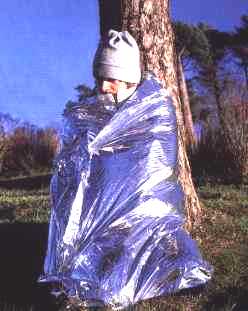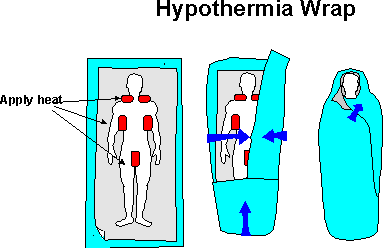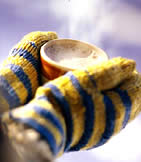




HYPOTHERMIA
 |
 |
 |
 |
 |
Introduction
Hypothermia is a lowering of the body's normal temperature. This may develop over days if someone is living in a poorly heated home or quickly if someone falls into cold water.
Symptoms
In the early stages you may notice shivering, cold, pale, dry skin. The person may suffer from apathy, belligerency, disorientation and irrationality. Their pulse will probably be slow and weakening, with slow shallow breathing. They may be drifting in and out of consciousness.
Treatment
To treat hypothermia, ensure that the person is warmed up in a slow and controlled manner. Avoid hot water bottles as they can cause problems like burns and displacement of blood. Alcohol that can worsen the condition.
If conscious, warm sweet drinks, soup, high-energy foods like chocolate will help their body to warm up. Stay with them, monitoring their condition. If questions or concern, contact medical assistance.
If Outdoors, you should do your best to protect the person from weather and the ground since a lot of body heat can be lost when lying down, even in warmer weather. Take the person to a sheltered place to protect from wind as soon as possible. Remove wet clothing and insulate the person with warm clothing, blankets, newspaper, etc. and when possible silver foil blankets or a survival bag. Never leave the person alone. Use your body heat to warm them if necessary. When help arrives, the person should be taken to the hospital by stretcher and not allowed to walk.
The elderly are particularly susceptible. Follow the advice above and ensure that medical treatment is given. Hypothermia can hide other conditions such as heart attack, stroke, etc. in elderly people.
Infants may be unusually quiet, refuse food or feel limp. Their skin may look healthy, but will feel cold. Warm them up slowly, wrapping them in blankets and moving to a warmer room. Contact medical assistance if you suspect a baby is suffering from hypothermia.
Disclaimer: This information is not intended be a substitute for professional medical advice. It is provided for educational purposes only. You assume full responsibility for how you choose to use this information.